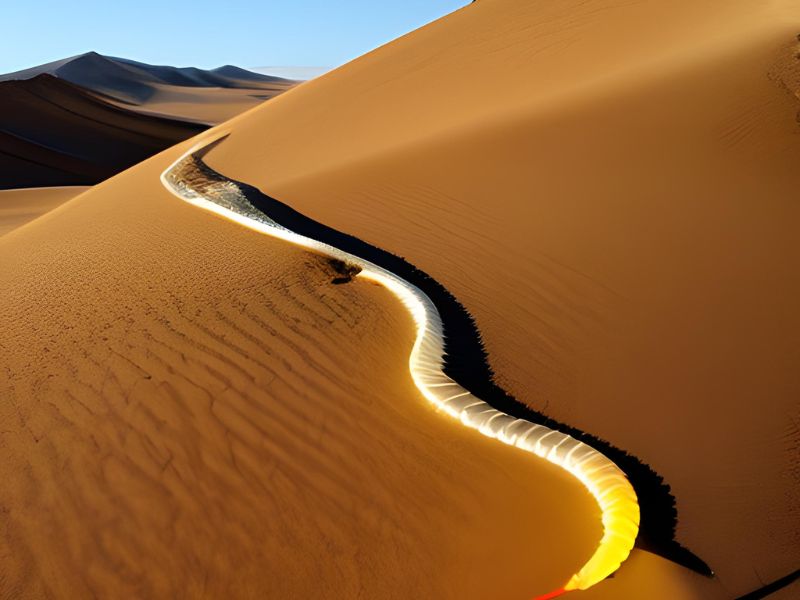The Mongolian death worm, known as “olgoi-khorkhoi” in Mongolia, which translates to “large intestine worm,” is an alleged creature said to inhabit the vast expanse of the Gobi Desert. Despite its name, this legendary creature is believed to be far from a typical worm, with descriptions painting it as a terrifying entity capable of spitting venom and delivering lethal electric shocks.
Description and Characteristics
According to tales, the Mongolian death worm is approximately two feet long and resembles a sausage or a large fat worm. It is often described as dark red in color, with spike-like projections at both ends. The creature is said to inhabit the most desolate parts of the Gobi Desert, primarily living and burrowing underground, and only rarely coming to the surface.
The Mongolian death worm is believed to have several deadly capabilities. It is said to kill at a distance, either by spraying a venom at its prey or through electric discharge. Legends claim that merely touching the worm can result in instant death.
History of the Legend
The creature first came to Western attention as a result of American paleontologist Roy Chapman Andrews’s 1926 book “On the Trail of Ancient Man.” Andrews detailed second-hand tales of the monster that he heard at a gathering of Mongolian officials. None of those present had seen the creature, but they firmly believed in its existence and described it in detail. However, Andrews himself was skeptical and did not believe in the creature’s existence.
Evidence For Its Existence
Despite the lack of tangible evidence, belief in the Mongolian death worm persists, fueled by consistent descriptions from second- and third-hand stories. Many believers claim that these descriptions, which come from different places and times, are too similar to be anything but independent eyewitness reports.
In 1983, a specimen of Tartar sand boa was shown to locals who claimed to have seen the “olgoi-khorkhoi,” and they confirmed that it was the same animal. This has led some to speculate that sightings of the Mongolian death worm may be misidentifications of known species, such as the Tartar sand boa or other limbless reptiles known as worm lizards, which resemble large worms and burrow underground.
However, several characteristics of the Mongolian death worm, such as its ability to deliver lethal electric shocks and spit venom, don’t match those of any known species. These reputed characteristics are based not on hard data but myths and stories. While it’s possible that these features are exaggerations found in rumor, legend, and folklore, they nonetheless add to the mystery and intrigue of the Mongolian death worm.
Conclusion: Fact or Fiction?
As of now, the Mongolian Death Worm remains an enigma, nestled between reality and myth. While many skeptics attribute the tales to misidentifications or folklore, believers hold onto the possibility that such a creature might exist, waiting to be discovered2.
The Mongolian Death Worm serves as a compelling testament to the mysteries and wonders of our world, reminding us that there are still countless secrets waiting to be unraveled. Whether fact or fiction, the legend of the Death Worm continues to captivate the minds of the curious, adding a layer of intrigue to the already mysterious landscape of the Gobi Desert.

